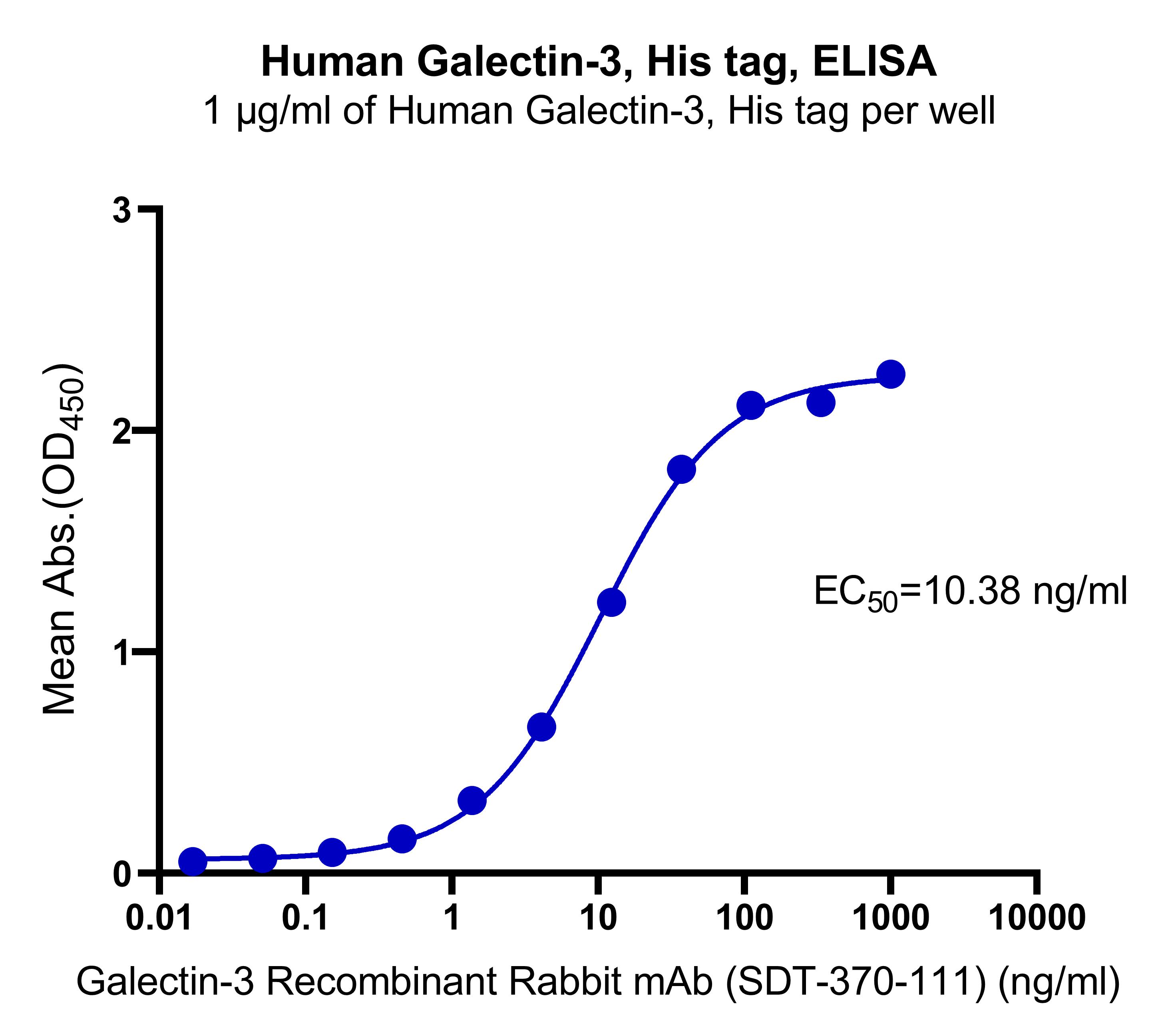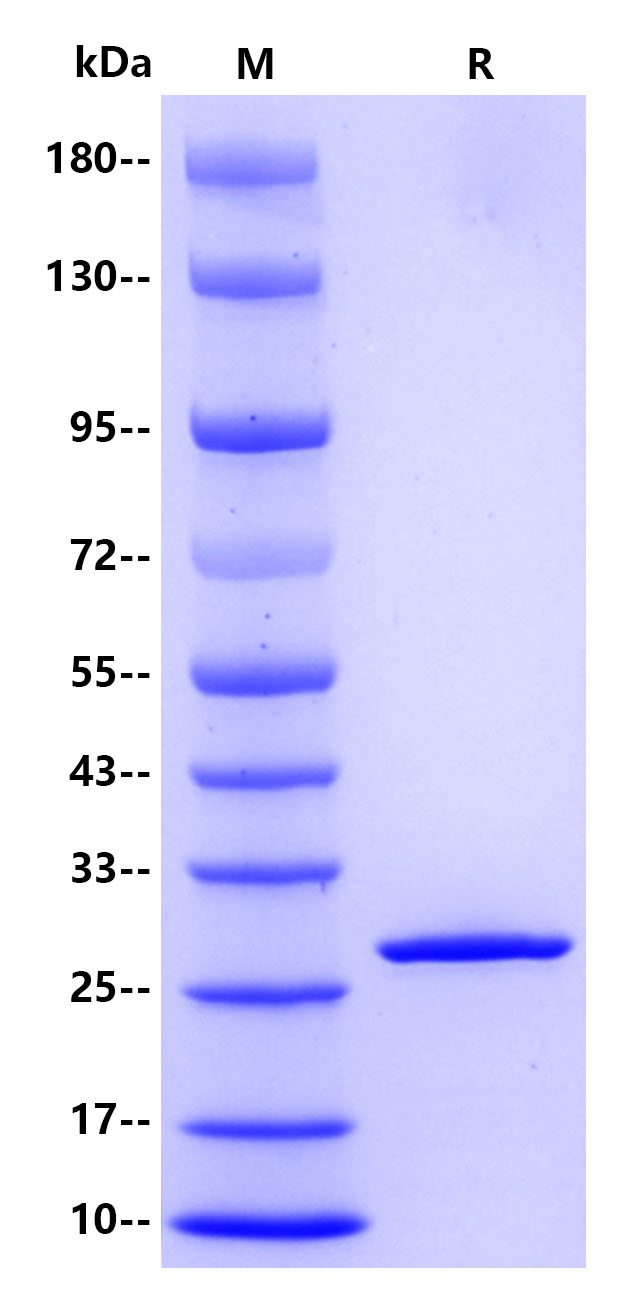Protein sequence(P17931, Ala2-Ile250, with C-10*His)
ADNFSLHDALSGSGNPNPQGWPGAWGNQPAGAGGYPGASYPGAYPGQAPPGAYPGQAPPGAYPGAPGAYPGAPAPGVYPGPPSGPGAYPSSGQPSATGAYPATGPYGAPAGPLIVPYNLPLPGGVVPRMLITILGTVKPNANRIALDFQRGNDVAFHFNPRFNENNRRVIVCNTKLDNNWGREERQSVFPFESGKPFKIQVLVEPDHFKVAVNDAHLLQYNHRVKKLNEISKLGISGDIDLTSASYTMIGGGGSHHHHHHHHHH
>95% by SDS-PAGE
· 12 months from date of receipt, -20 to -70 °C as supplied.
· 6 months, -20 to -70 °C under sterile conditions after reconstitution.
· 1 week, 2 to 8 °C under sterile conditions after reconstitution.
· Please avoid repeated freeze-thaw cycles.
Galectin-3 is a member of the lectin family, of which 14 mammalian galectins have been identified. Galectin-3 is approximately 30 kDa and, like all galectins, contains a carbohydrate-recognition-binding domain (CRD) of about 130 amino acids that enable the specific binding of β-galactosides. Galectin-3 (Gal-3) is also a member of the beta-galactoside-binding protein family that plays an important role in cell-cell adhesion, cell-matrix interactions, macrophage activation, angiogenesis, metastasis, apoptosis. Galectin-3 is increasingly being used as a diagnostic marker for different cancers. It can be screened for and used as a prognostic factor to predict the progression of the cancer. Galectin-3 has varying effects in different types of cancer. One approach to cancers with high galectin-3 expression is to inhibit galectin-3 to enhance treatment response.

Immobilized Human Galectin-3, His tag at 1 μg/mL (50 μL/well) can bind Galectin-3 Recombinant Rabbit mAb (SDT-370-111) (S0B2197) with EC50 of 9.036-11.94 ng/ml.
